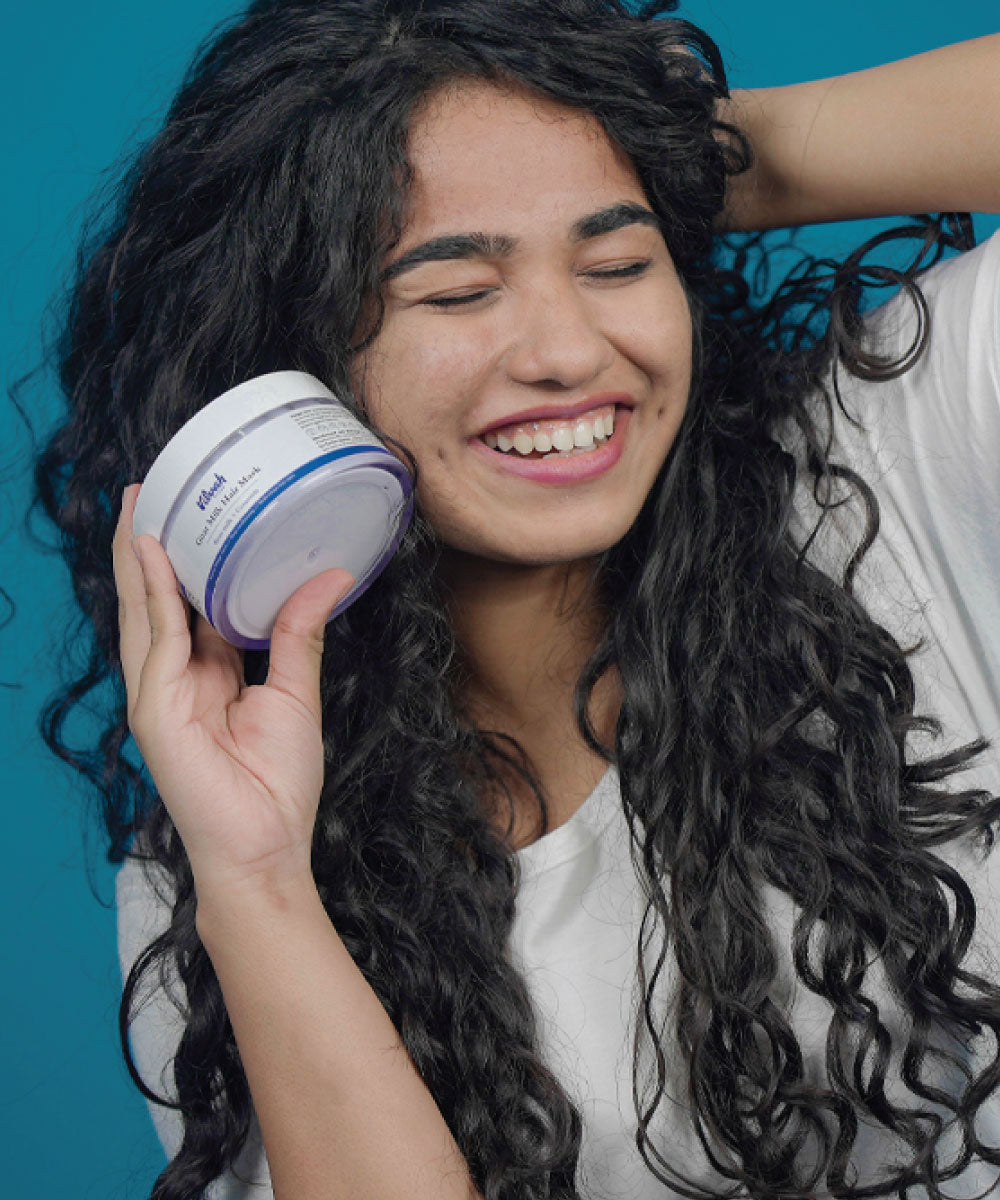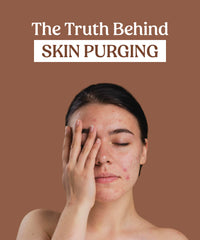Have you ever struggled to comb your hair before going out, and it just won’t listen? Or styled it perfectly, only for it to turn frizzy as soon as you step outside? Maybe your hair feels dry, puffy, and hard to manage - no matter how much serum you use. If this sounds like your everyday hair problem, a good hair mask might be all you need. In this blog, discover when and how to apply a hair mask the right way and bring back smooth, manageable strands.
What is a Hair Mask?
A hair mask is a deep treatment for your hair. It is richer than regular conditioners and full of nutrients. It helps repair, hydrate, and smooth your hair from the inside out. You can think of it as a weekly reset for dry, damaged, or tired hair.
Hair Mask Benefits
Hair masks do more than just soften your hair. Packed with nourishing ingredients, a good hair mask can transform dull, dry strands into smooth and healthy-looking hair.
Here’s what regular use can do:
- Hydrates deeply to treat dryness and rough texture
- Repairs damage caused by heat styling, colouring, or pollution
- Controls frizz and makes hair easier to manage
- Adds shine and smoothness for a healthier appearance
- Strengthens hair and helps reduce breakage and split ends
If your strands feel parched or lifeless, using a hair mask for dry hair can give them the hydration boost they need.
When Should You Apply a Hair Mask?
Not sure when to use a hair mask? Timing matters more than you think. Applying it at the right stage in your routine and with the right frequency can make all the difference in how your hair looks and feels.

Here’s when you should reach for a hair mask:
- Once a week if your hair is dry, frizzy, or lacks shine
- Twice a week for damaged, chemically treated, or heat-styled hair
- Every 10–15 days if your hair is healthy but needs extra care
The best time to apply a hair mask is after shampooing, when your hair is clean and damp. This allows the ingredients to penetrate better and deliver deeper nourishment. Always make sure your hair is not dripping wet, or the mask may not stick well.
Think of hair masking as your weekly hair therapy. Just like skincare, your strands deserve some extra love too.
How to Apply a Hair Mask: Step by Step Guide
Using a hair mask the right way can make a big difference. It's not just about applying and rinsing. There’s a simple method that helps your hair soak up all the goodness. Follow this easy step-by-step routine to get soft, smooth, and nourished hair every time.

1. Start with clean hair
Always begin by shampooing your hair. This removes dirt, oil, and product buildup so your strands can fully absorb the mask.
2. Gently towel-dry
After rinsing your shampoo, use a towel to gently remove excess water. Your hair should be damp, not soaking wet.
3. Section your hair
Divide your hair into 2-4 sections. This helps spread the mask evenly and makes application easier.
4. Apply the mask generously
Take a good amount of the hair mask and apply it from the mid-lengths to the ends. These are usually the driest parts. Use your fingers or a wide-tooth comb to spread it evenly.
5. Massage the scalp (optional)
If the mask is safe for scalp use (like Vilvah’s Goat Milk Hair Mask), gently massage it in to boost blood flow and enhance absorption.
6. Let it sit
Leave the mask on for 10-15 minutes, or follow the time mentioned on the product label. This is when the ingredients get to work.
7. Rinse thoroughly
Wash off the mask using lukewarm water. Make sure no residue is left behind, as leftover product can weigh hair down.
Special Hair Mask Tips for Better Results
Using a hair mask is great but using it the correct way makes all the difference. A few simple tweaks in your routine can help your hair soak up more goodness and show better results over time.
Here are some expert tips to make the most of your hair masking session:
- Use warm water to start: Warm water helps open up the hair cuticles so the mask can penetrate better.
- Wrap it up: Cover your hair with a shower cap or a warm towel while the mask sits. This locks in heat and boosts absorption.
- Don’t rush the rinse: Be patient while rinsing. Make sure the product is completely washed out to avoid buildup.
- Stay consistent: A one-time mask won’t work miracles. Add it to your weekly hair care routine for long-term results.
- Avoid the roots(unless suggested): Focus on the mid-lengths and ends unless the mask is designed for the scalp too.
Small steps, big results. Treat your hair with a little extra care, and it will thank you back with shine, softness, and bounce.
Ready to See the Results?
To get the best out of your hair mask, consistency is key. Stick to a regular routine, apply it on clean, damp hair, and give it enough time to work its magic. For deeper nourishment, wrap your hair in a warm towel and relax while the mask does the rest.
Want silky, frizz-free hair without salon visits? Discover Vilvah’s hair care range, including our Goat Milk Hair Mask - your answer to soft, healthy, manageable strands.
Frequently Asked Questions
1. Can we apply hair mask on oiled hair?
No, applying a hair mask on oiled hair isn’t effective. Oil blocks the mask from penetrating the hair properly. Always apply a hair mask on clean, damp hair so it can deeply nourish and repair from root to tip.
2. Should you use a hair mask before or after shampooing?
Use a hair mask after shampooing and before conditioning. Shampoo opens the hair cuticle, allowing the mask to go deeper. Follow with conditioner to lock in the moisture and seal the cuticle for smooth, shiny results.
3. How long should you leave a hair mask on?
Leave a hair mask on for 5 to 10 minutes, depending on your hair type. This gives enough time for the ingredients to work deeply. Leaving it too long won’t improve results and may even weigh the hair down.
4. Should I shampoo after applying hair mask?
No, you shouldn’t shampoo after using a hair mask. Shampooing again removes the benefits of the mask. Always shampoo first, then apply the mask, rinse it off, and follow with conditioner if needed.
5. How often should you hair mask?
Use a hair mask once or twice a week. If your hair is very dry, damaged, or frizzy, you can use it more often. Regular use helps restore moisture, improve texture, and keep your hair healthy and soft.
6. Can I use a hair mask instead of conditioner?
You can, but not daily. A hair mask is more intense than a conditioner. It’s great once or twice a week for deep repair, but for regular use, stick to conditioner to keep your hair balanced and buildup-free.


 My Orders
My Orders
 Track Order
Track Order












Leave a comment
All comments are moderated before being published.
This site is protected by hCaptcha and the hCaptcha Privacy Policy and Terms of Service apply.